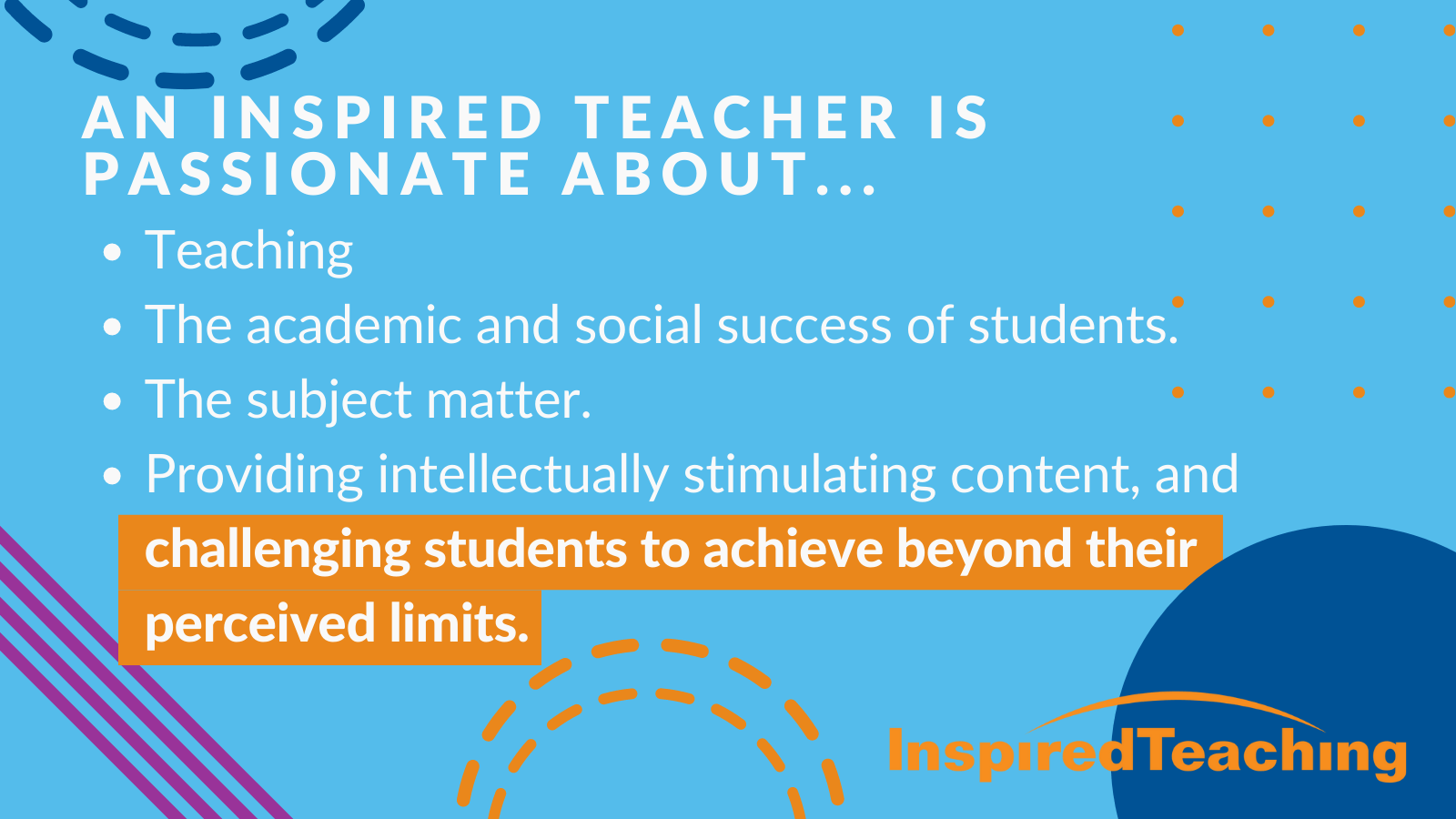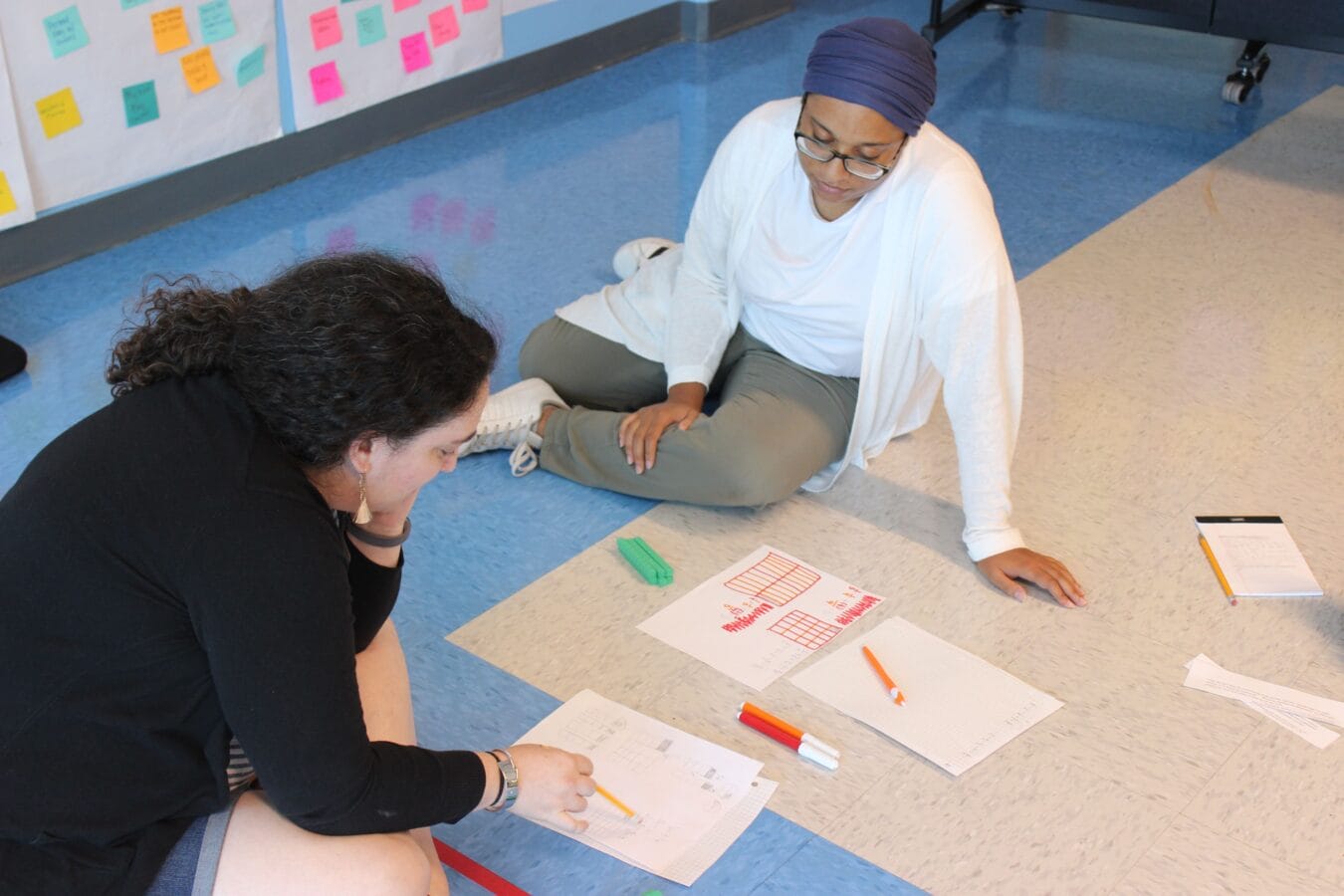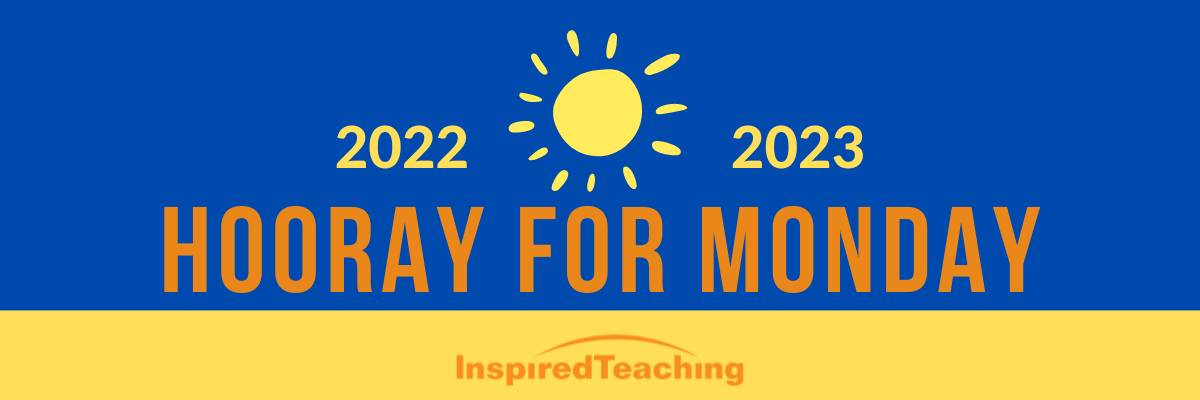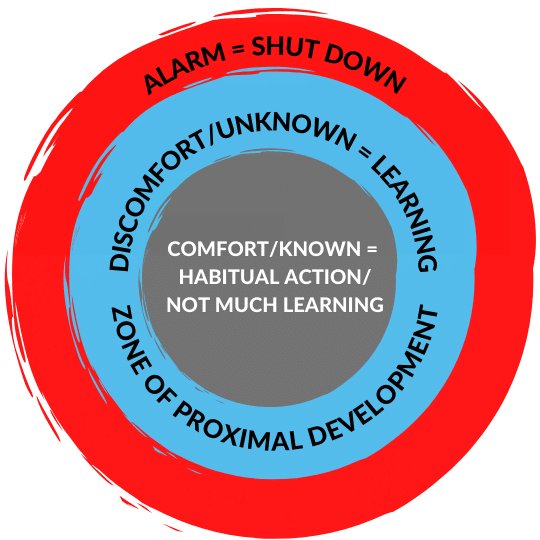August 8, 2022
By Aleta Margolis, Founder and President, Center for Inspired Teaching
Hooray for Monday is a weekly blog filled with questions, ideas, reflections, and actions we can all take to remodel the school experience for students.
The start of the school year offers an important moment to create expectations that will last the whole year. But how do you know if you are challenging your students…the right amount? We want our students to know we expect them to learn, to grow, to be able to do new things every day in school. And, we want to be mindful of student needs – so we don’t want to push them to the point of distress.
Most of us are familiar with psychologist Lev Vygotsky and his construct, the zone of proximal development. In simple terms, challenging students to spend time in their zones of proximal development means helping them identify their capabilities and competencies, and then stepping just far enough outside of their comfort zones to stretch toward what might be possible.

At Inspired Teaching, we engage teachers in exercises designed to stretch our own comfort zones, so we can do the same for our students.
Here is one simple exercise to do with your students in the first days of school.
Clear a space in your classroom, or better yet, head outside to the playground or any open space. Share this image (if you’re outside, you can simply show it to students; if you’re inside, you can post it on the wall).
Gather everyone together in the center of the space, pointing out that you are now in the “comfort zone.” Invite your students to imagine the three concentric circles in the graphic. Let them know you will call out a series of activities. For each prompt, each person should move to stand in the “comfort zone” or “unknown” or “alarm zone” depending on how they feel about the activity. Here is a sample list to get you started:
- Meeting someone for the first time
- Going on a rollercoaster
- Giving a speech
- Playing team sports
- Dancing
- Cooking
- Walking a dog
- Carrying a spider outside
- Reading
- Eating a new food
- Trying to talk to someone in a language other than English
- Trying to solve a math problem I’ve never seen before
- Add your own items here!
Adjust the list however you like, noting that it’s wise to begin with general items, and then move into prompts that are specific to your classroom.
After a while, invite students to shout out their own prompts for everyone to respond to. Be sure to play along with your students, so they can learn about your comfort zones too.
End the exercise by inviting students to share their observations, how they felt while playing, and what they noticed about themselves and others. You might also ask how they think this activity might connect to the learning experience they’ll have in school this year, and see where that conversation goes.

I recommend this exercise at the beginning of the school year to show students that their classroom is a place where they will be supported and challenged at the same time. It helps set up a learning environment in which students know they will be expected to push themselves and work hard, and that they will be safe and supported when they step outside of their comfort zones.
When we say Inspired Teachers challenge students to achieve beyond their perceived limits, we don’t mean teachers should ignore students’ problems or limits. We do mean teachers should teach students how to thrive within the context of their current, and future, skill sets, the things they can’t do yet, but might be able to do in time.
Wishing you a week filled with opportunities to explore all that might be possible as you embark on this new school year.
Open Your Year with “Yet” and “Might”

What might happen if we spend time in the first days of school asking students not only about what they know and can do now, but also about what they aspire to know and be able to do in the future? Try asking your students (and yourself!) these questions:
- What do I know and understand right now?
- What might I know and understand tomorrow? Next week? Next month? At the end of the year?
- What can I do right now?
- What might I be able to do tomorrow? Next week? Next month? At the end of the year?
- What are my future skill sets?
- What might I be able to do by the end of this coming school year that I can’t do just yet?
These questions can be as specific or broad as you wish. You can focus them on a content area in the curriculum (an upcoming unit on geology, fractions, or Medieval History, for example). Or you can keep them wide open, and see what emerges. Either way, you’ll collect useful data; and you’ll engage your students as partners in learning (not objects of learning) from Day 1!

